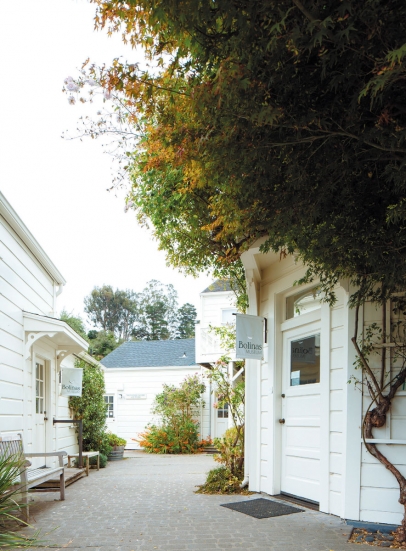Bounty: Fine Food Production in Coastal Marin from 1834 to Today
Bolinas Museum Exhibition Celebrates the Bounty of Coastal Marin
“West Marin is an abundant land. The Miwok Indians who once populated this region revelled in the land’s productivity. Then as now, Marinites lived high on the hog, enjoying the beaches, lagoons and bays with fish and shellfish. Today the valleys and flatlands where wild game was once plentiful provide a good share of the organic produce consumed by Bay Area diners.”
—David Mitchell, former editor and publisher of the Point Reyes Light, The Coastal Cook of West Marin (Riley and Company, 1991)
Every Monday at high noon you’ll find me in Point Reyes Station at KWMR Radio doing my “Farm & Foodshed Report.” It’s not uncommon, when I exit the studio, to find someone waiting for me to discuss my show. Conversations range from trying to convince me to become a vegan activist to asking me for my Mammaw’s pecan pie recipe.
After one show this past summer, a vibrant woman approached me and introduced herself as Elia Haworth. She is the curator of coastal Marin art and history for the Bolinas Museum. She’d heard my show and wanted discuss a project. Over coffee at Toby’s Feedbarn we talked about the magical confluence of land, water and people that made our area so fecund with food and innovations.
We also discovered that she had lived next door to my former Bolinas sweetheart in a magical spot on Wharf Road where I had my first true California romance and first local oysters. Just a few steps away from this personally notable spot is the Bolinas Museum, a graceful complex of historic buildings constructed over 100 years ago that have been thoughtfully restored in recent years. As Elia and I met in the museum’s alluring courtyard a few days later, the scents of the lagoon, the ocean and my memories swirled together in a way that made me feel that this space itself is the treasure of the Bolinas Museum’s permanent collection.
Elia was excited to tell me about the museum’s upcoming exhibition—Bounty: Fine Food Production in Coastal Marin from 1834 to Today, which will “explore and celebrate the dynamic history, continuity, innovations and contemporary vision of fine food production in coastal Marin,” according to Elia.
Elia’s co-curator of the show is Sandy Dierks, an educator and farmer at her own family farm in Bolinas, Paradise Valley Produce. Sandy shares that “To me, Bounty is a tale of gratitude told through stories, photos, videos and artifacts from this shared place we call home. It’s been such a pleasure to learn from the ranchers and farmers before us what it took to create community and to watch a vibrant agricultural future going forward.”
According to Jennifer Gately, executive director of the Bolinas Museum, “The Museum has been collecting, preserving and exhibiting the history of local agriculture since it was first founded in 1983.” In fact, Elia and Sandy first curated a small exhibition on the topic in the Museum’s history room 10 years ago. The new museum-wide show is a reflection of the ever increasing importance of the region’s agriculturalists, past, present and future.
Immerse yourself in the bounty of coastal Marin through historic and contemporary photographs, maps, ephemera, art, agricultural tools and events featuring some of the most iconic figures in agriculture today at the Bolinas Museum’s Bounty: Fine Food Production in Coastal Marin from 1834 to Today, opening September 24, 2016, and continuing through January 1, 2017. BolinasMuseum.org





